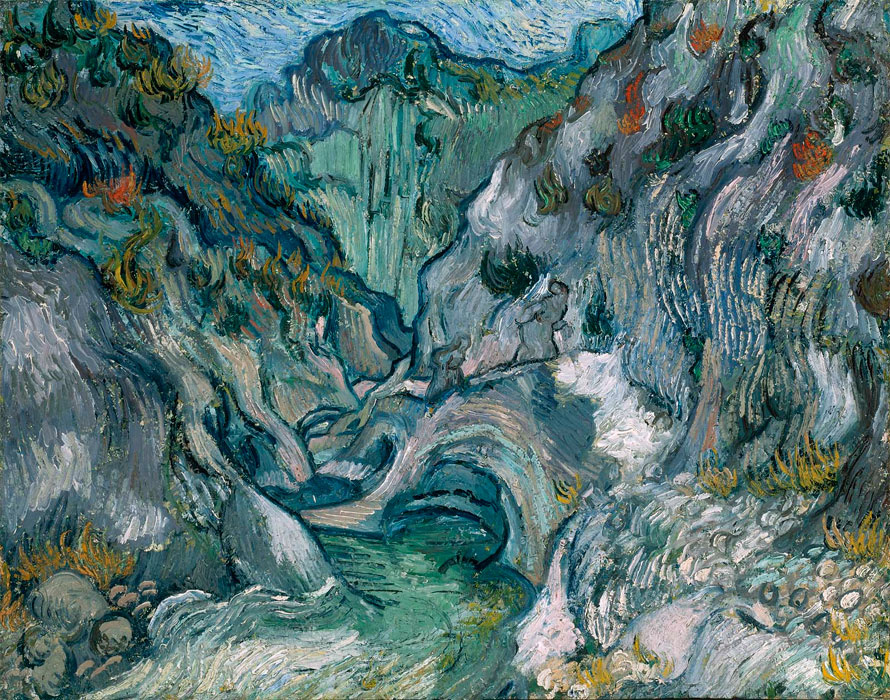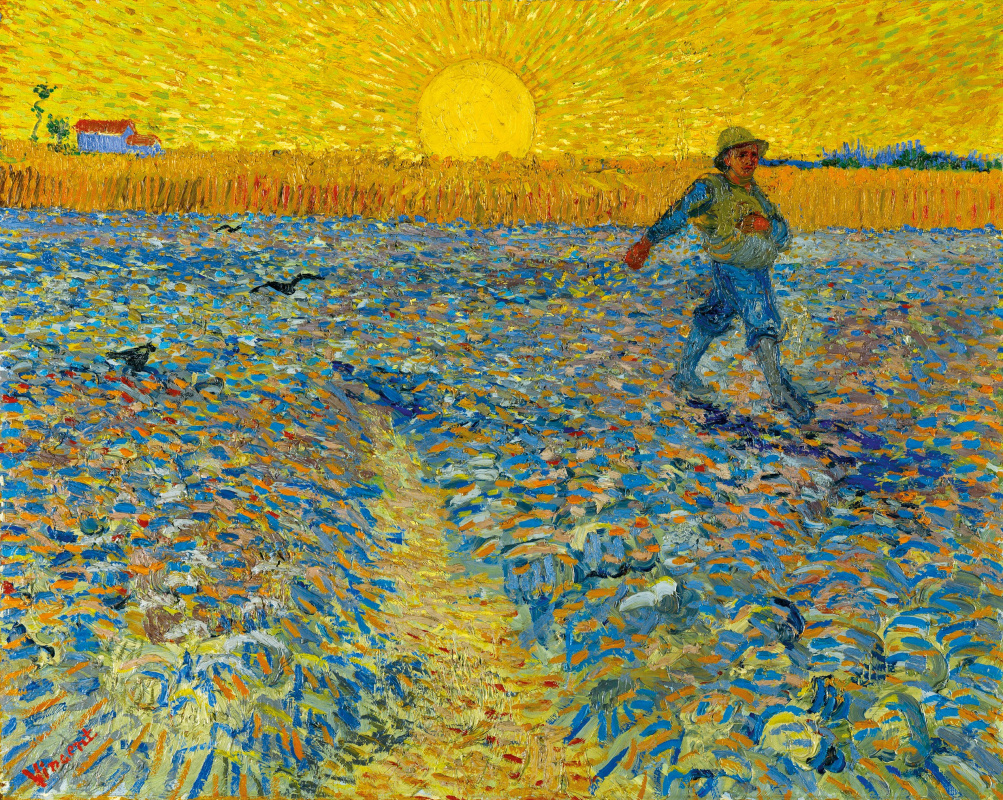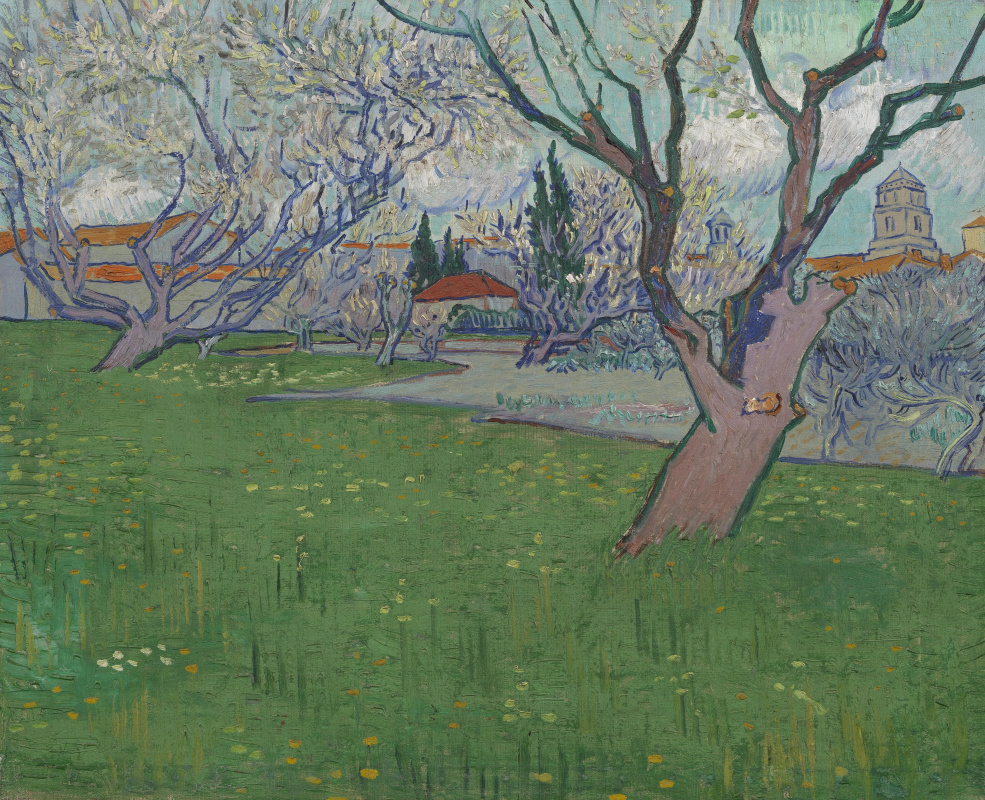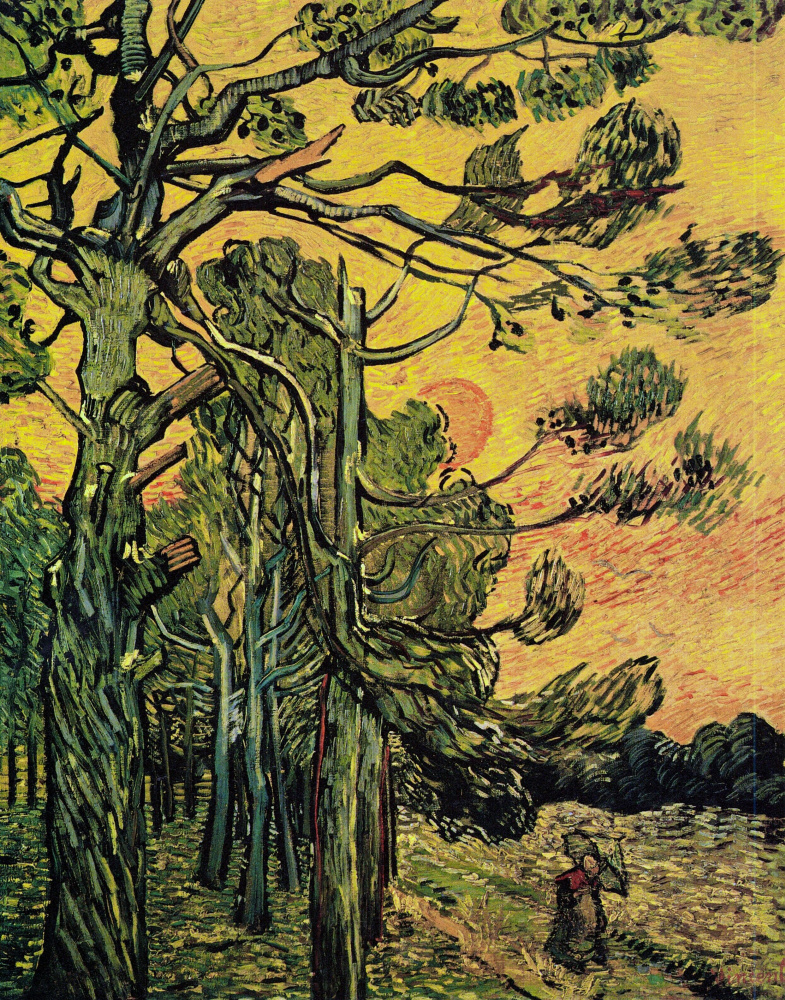For the last 50 years the Danish public has been able again to experience a large exhibition devoted exclusively to van Gogh’s paintings and drawings. In a unique collaboration with the Kröller-Müller Museum, ARKEN — the beachside museum of modern art to the south of the city centre — opened its doors for a wide-ranging exhibition of van Gogh’s artworks with a focus on the relations among art, humanity, nature and religion.

Vincent van Gogh (1853−90) is one of the most famous artists to have walked this earth. On 23 December 1888, when Vincent van Gogh cut off most of his left ear during a psychotic episode, he was still entirely unknown as an artist. He had no idea that this violent action would help define the framework for the mythmaking and world fame that would later surround his life and art — and which today flourish unabated. A less well known but quite crucial dimension in Van Gogh’s life, however, is his religiosity. For Van Gogh life and art were a hard struggle.
ARKEN's exhibition shows with 28 paintings and 11 drawings how Van Gogh, with his depictions of southern French wheat fields, sun-baked olive groves and Dutch harvest workers, wanted to express the divine in nature and in humanity — amidst a time of upheavals when faith was under pressure from modern philosophy and science. With vibrant brush strokes and energetic colours he imbued even the smallest blade of grass with his very own understanding of spirituality.

Arken Museum of Modern Art, Copenhagen
"What am I in the eyes of most people? A nonentity or an oddity or a disagreeable person — someone who has and will have no position in society, in short a little lower than the lowest. Very well…, then through my work I’d like to show what there is in the heart of such an oddity, such a nobody."
Vincent van Gogh
Vincent van Gogh
The ravine
1889, 73×92 cm
Van Gogh’s landscapes are not charming postcards frozen in time. Everything lives and moves. The earth swells, the trees breathe and the heavenly bodies follow their courses.
From childhood Van Gogh was preoccupied with the close study
of nature. All his life he wandered on foot through the landscapes he lived in, and as an artist he preferred to paint under the open sky. Over time Van Gogh developed a quite personal Christian faith. He did not attend church. He found the divine outside the church in everything living, from a dandelion in seed to the intense sea of beams of the sinking sun.
The sower and the sunset
June 1888, 64×80.5 cm
In "The Sower" van Gogh gathers his ideas about an artist as someone who shows us the spiritual depths of nature by creating beautiful depictions of it. The sower is the protagonist of the Biblical parable about spreading the word of God. At the same time he is a quite ordinary peasant who works to the rhythm of nature.
In a letter from 1889 Van Gogh wrote: "I plough on my canvases as the peasants do in their fields." When Van Gogh ploughed the canvas with his brush, he immersed himself in the loam, the olive groves and the quiet corners in the rambling garden of the psychiatric hospital in Saint-Rémy. He asked himself how he could make himself useful — like the diligent peasant — as an artist in the world. The answer for him was to sow the divine message of beauty in the world through his painting.

Van Gogh spent only ten years of his life as an artist, from 1880 until his death. During that short time, in intense, fervent works, he was able to develop an original visual language, one that expressed his personal, spiritual approach to nature and the creation of pictures.
He is best known for his time spent in Arles in the South of France, where he painted vivid landscapes using thick, frenetic brushstrokes. These works betray van Gogh’s close interest in nature, which can be traced back to his youth.
Left: Vincent van Gogh, Garden of the asylum at Saint Rémy (detail) 1889.
View of Arles with trees in blossom
April 1889, 53.5×65.5 cm
Vincent Van Gogh is loved for his moving paintings and letters, which give us intimate insights into his life and thoughts. For Van Gogh life and art were a hard struggle. Yet he was able to create an original artistic idiom that demonstrates his profound belief in the cosmic unity of man and nature.
Pine trees against an orange sky with the setting sun
November 1889, 92×73 cm
The Kröller-Müller Museum boasts the second-largest Van Gogh collection in the world: almost 90 paintings and over 180 drawings. The Van Gogh Gallery displays varying selections of about 40 works by Vincent van Gogh. Furthermore, you will also find masterpieces by modern masters such as Claude Monet, Georges Seurat, Pablo Picasso and Piet Mondriaan.
Pollard willows at sunset
1888, 31.5×34.5 cm
In 2017 there was created "Loving Vincent" — the world’s first fully painted animated feature film. It tells the story of the last years of Vincent van Gogh’s life, and in particular, the circumstances of his death. Each of the film’s 65,000 frames is an oil painting on canvas, using the same technique as Van Gogh, created by a team of over 100 painters. Film was nominated for Animated Feature Film for Oscars 2018.
The Van Gogh exhibition at Arken Museum of Modern Art runs through 20 January 2019.
Based on materials from Kröller-Müller Museum official site, Sotheby’s, Arken Museum.
Title illustration: Vincent van Gogh, Self-Portrait 1887
Title illustration: Vincent van Gogh, Self-Portrait 1887


















